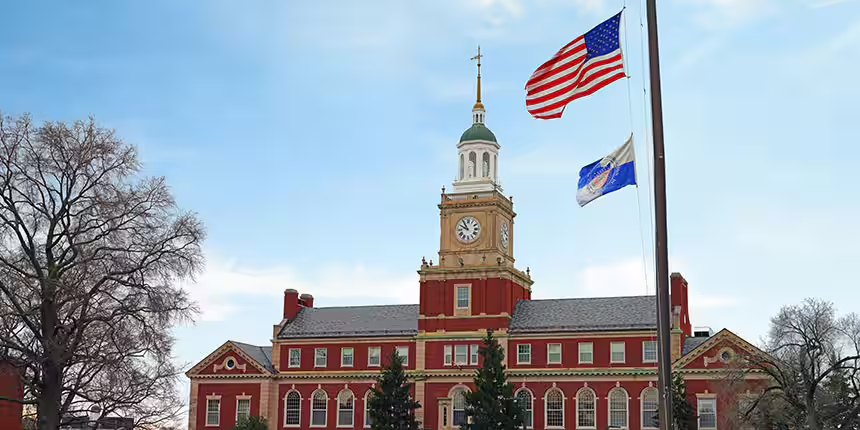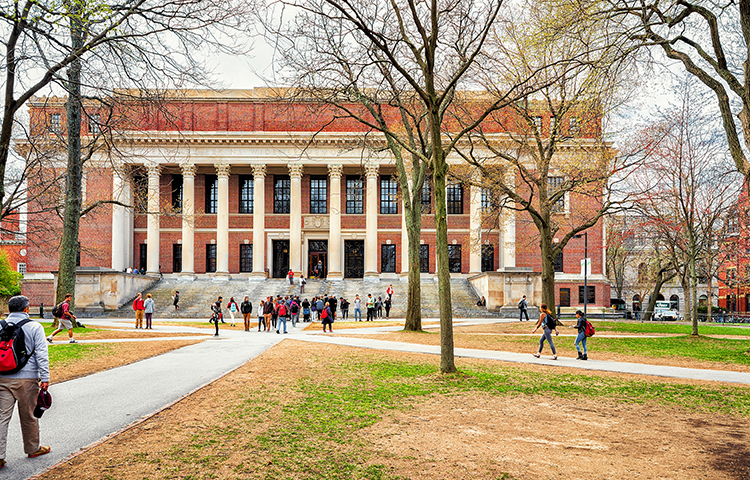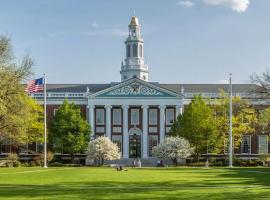The United States has long been a beacon for academic excellence, drawing millions of students from all corners of the globe. With a plethora of universities offering world-class education and cutting-edge research opportunities, the U.S. has become synonymous with innovation and career success. Whether you’re seeking an Ivy League education, specialized programs, or a diverse campus experience, the U.S. has something for everyone.
Introduction

The United States stands out as one of the most sought-after destinations for higher education. Every year, international students flock to American universities to take advantage of their outstanding programs, state-of-the-art facilities, and vibrant campus life. But what makes the U.S. education system so attractive?
First, the sheer diversity of universities ensures there’s a perfect fit for every type of student. From prestigious Ivy League institutions to smaller liberal arts colleges, the choices are nearly endless. Additionally, the flexibility of the education system allows students to explore various disciplines before settling on a major, providing a comprehensive learning experience. Lastly, the U.S. is home to many of the world’s top-ranked universities, making it a hub for academic and professional growth.
Overview of the U.S. Education System

Structure of Higher Education in the United States
The U.S. education system offers a wide array of options for students at every academic level. Universities in the U.S. fall into two broad categories: public and private institutions. Public universities are funded by state governments and typically offer lower tuition fees for in-state students, while private universities are independently funded and often emphasize smaller class sizes and specialized programs.
Academic programs are divided into undergraduate, graduate, and doctoral levels. Undergraduate programs usually last four years and culminate in a bachelor’s degree. Graduate programs, including master’s and Ph.D. programs, vary in length but are typically more focused on specific areas of study.
Accreditation in the United States
One of the defining features of the U.S. education system is its emphasis on accreditation. Accreditation ensures that institutions meet rigorous academic and administrative standards, safeguarding the quality of education. In the U.S., accreditation is managed by regional and national bodies. For international students, ensuring that a chosen university is accredited is crucial for degree recognition worldwide.
Key Features of U.S. Universities
U.S. universities pride themselves on diversity, both in terms of student populations and academic offerings. Campuses are vibrant hubs of cultural exchange, with students from various backgrounds contributing to a rich educational experience. Additionally, universities are well-equipped with advanced facilities, including libraries, laboratories, and innovation centers, which foster research and creativity.
Top Universities in the United States

Ivy League Universities
When discussing prestigious institutions, the Ivy League is often the first to come to mind. These eight universities, located in the northeastern U.S., are renowned for their academic rigor, rich history, and influence.
- Harvard University: As the oldest university in the U.S., Harvard is a leader in nearly every academic discipline, from business to medicine.
- Yale University: Known for its strong emphasis on the humanities and law, Yale also boasts a highly selective admission process.
- Princeton University: Famous for its undergraduate focus and groundbreaking research, Princeton offers unparalleled access to faculty mentorship.
Top Public Universities
Public universities are an excellent choice for students seeking quality education at a relatively lower cost. Many public institutions are ranked among the best globally.
- University of California, Berkeley (UC Berkeley): A leader in science, technology, and environmental studies, Berkeley is often dubbed the “crown jewel” of the UC system.
- University of Michigan, Ann Arbor: Known for its extensive alumni network and vibrant campus life, Michigan excels in business, engineering, and the arts.
Private Elite Institutions
Beyond the Ivy League, several private universities have carved out a niche for themselves in specialized areas.
- Stanford University: Located in Silicon Valley, Stanford is synonymous with innovation and entrepreneurship, making it a favorite for tech enthusiasts.
- Massachusetts Institute of Technology (MIT): Globally recognized for its expertise in science, engineering, and technology, MIT produces some of the brightest minds in the world.
Liberal Arts Colleges
For students who value a broad-based education, liberal arts colleges offer a unique approach. These institutions prioritize critical thinking, creativity, and interdisciplinary learning.
- Williams College: Regularly ranked as the top liberal arts college in the U.S., Williams is celebrated for its close-knit community and rigorous academics.
- Amherst College: Known for its open curriculum, Amherst encourages students to design their educational journey.
Choosing the Right University
Factors to Consider
Selecting the right university can be a daunting task. Key considerations include:
- Academic Programs: Ensure the university offers strong programs in your field of interest.
- Location: Do you prefer an urban, suburban, or rural setting?
- Cost: Look at tuition fees, living expenses, and available scholarships.
Understanding Admission Criteria
U.S. universities typically assess applications holistically. Factors like standardized test scores (SAT/ACT), GPAs, essays, and extracurricular activities are considered. International students may also need to demonstrate English language proficiency through tests like the TOEFL or IELTS.
Resources for International Students
Many U.S. universities provide dedicated support for international students. From helping with visa paperwork to offering cultural assimilation programs, these services ensure a smooth transition for students.
Cost of Education in the U.S.
Tuition and Fees
Tuition varies widely depending on the university. On average, public universities charge lower tuition for in-state students, while private universities have higher fees. Graduate programs are often more expensive but may offer teaching or research assistantships to offset costs.
Scholarships and Financial Aid
Numerous scholarships are available for international students, ranging from merit-based awards to need-based assistance. Researching scholarship opportunities specific to your chosen field or university can significantly reduce financial burdens.
Work Opportunities for Students
Students on F-1 visas are allowed to work on campus part-time during the academic year and full-time during breaks. Many universities also have internship placement programs that help students gain professional experience.
Benefits of Studying in U.S. Universities
Global Recognition and Prestige
Degrees from U.S. universities hold immense global value. These institutions consistently top international rankings, and their alumni often occupy leadership roles across industries worldwide. A U.S. degree signals not just academic excellence but also adaptability and a readiness to excel in diverse environments.
Research and Innovation
The United States is a global leader in research and technological advancement. Universities here prioritize innovation, offering students opportunities to work on groundbreaking projects alongside leading experts. From Nobel laureates on faculty to partnerships with major corporations, U.S. universities provide unparalleled resources for budding researchers.
Career Opportunities
The strong ties between U.S. universities and industries translate into exceptional career prospects for graduates. Many institutions have dedicated career centers that offer resume workshops, mock interviews, and networking events. Additionally, proximity to hubs like Silicon Valley, Wall Street, and Hollywood gives students direct access to leading industries.
Networking and Alumni Support
Attending a U.S. university connects you to a vast alumni network that can open doors throughout your career. Alumni often mentor current students, assist with internships, and provide guidance on navigating the professional world. This network becomes a lifelong asset, offering support and connections globally.
Challenges of Studying in the United States
Financial Challenges
One of the most significant hurdles for students is managing the high cost of education. Tuition, housing, and living expenses can quickly add up. However, with proper planning—such as securing scholarships, part-time work, or student loans—many students overcome these challenges.
Cultural and Social Adjustments
For international students, adapting to a new culture can be both exciting and daunting. Differences in language, food, and customs may initially cause discomfort. Universities, however, often host cultural exchange programs and orientation sessions to help students feel at home.
Academic Pressure
U.S. universities are known for their rigorous academic standards. Balancing coursework, extracurricular activities, and part-time jobs can be challenging. Time management and seeking support when needed—whether from professors or campus counseling services—are essential strategies for success.
Conclusion
The United States remains a top choice for students aiming to receive a world-class education and prepare for a competitive global workforce. Its universities offer unmatched academic programs, cutting-edge facilities, and a vibrant campus life that fosters personal and professional growth. Although challenges exist, the rewards of studying in the U.S. far outweigh the obstacles.
Whether you aspire to become a groundbreaking scientist, a visionary entrepreneur, or a cultural ambassador, the U.S. provides the platform and resources to help you achieve your goals. If you’re considering pursuing higher education in the U.S., explore your options, prepare thoroughly, and take the leap!
FAQs
1. What are the admission requirements for top U.S. universities?
Admission requirements vary by university but typically include strong academic records, standardized test scores (SAT/ACT or GRE/GMAT), recommendation letters, essays, and extracurricular achievements. International students also need proof of English proficiency through tests like TOEFL or IELTS.
2. How can international students apply for scholarships in the U.S.?
Research is key. Many universities list scholarship opportunities on their websites. Additionally, external organizations like Fulbright and private foundations offer scholarships specifically for international students.
3. Which U.S. universities are best for engineering and technology studies?
MIT, Stanford, California Institute of Technology (Caltech), and UC Berkeley are globally recognized for their engineering and technology programs.
4. Is studying in the United States worth the cost?
Yes, for many students, the cost is justified by the quality of education, career opportunities, and global recognition of U.S. degrees. However, securing financial aid or part-time work can make it more affordable.
5. Can students work while studying in the U.S.?
Yes, international students on F-1 visas can work up to 20 hours per week on campus during the academic year and full-time during vacations. Optional Practical Training (OPT) and Curricular Practical Training (CPT) provide additional work opportunities related to a student’s field of study.



